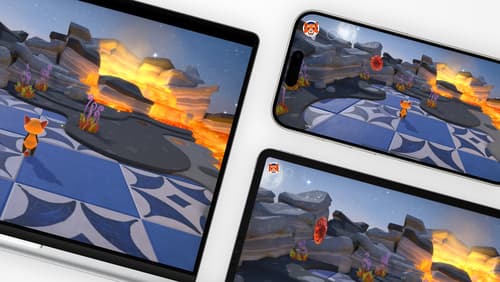How do I get started with iPhone app developpement
Asked on 2024-08-05
1 search
To get started with iPhone app development, you can follow these steps:
-
Learn Swift and SwiftUI: Swift is the programming language used for iOS development, and SwiftUI is a framework for building user interfaces. You can start learning these through Apple's official documentation and tutorials.
-
Install Xcode: Xcode is the integrated development environment (IDE) for macOS that you will use to develop iOS apps. It includes all the tools you need to create, test, and debug your apps.
-
Explore Xcode Essentials: The session Xcode essentials provides a comprehensive overview of working efficiently in Xcode, covering editing, debugging, testing, and more.
-
Use Swiftassist: Swiftassist is a new feature in Xcode that helps with coding tasks, including writing Swift code and experimenting with new APIs. You can learn more about it in the Platforms State of the Union.
-
Experiment with Sample Projects: Start with sample projects to understand the structure and components of an iOS app. You can modify these projects to see how changes affect the app.
-
Follow Human Interface Guidelines: Apple's Human Interface Guidelines provide best practices for designing user interfaces that are intuitive and consistent with the platform.
-
Test and Debug: Use Xcode's built-in tools to test and debug your app. The session Xcode essentials covers debugging and testing in detail.
-
Distribute Your App: Once your app is ready, you can distribute it using TestFlight for beta testing and then submit it to the App Store.
For more detailed guidance, you can refer to the following sessions from WWDC:
These sessions will provide you with a solid foundation and the necessary tools to start developing iPhone apps.

Port advanced games to Apple platforms
Discover how simple it can be to reach players on Apple platforms worldwide. We’ll show you how to evaluate your Windows executable on Apple silicon, start your game port with code samples, convert your shader code to Metal, and bring your game to Mac, iPhone, and iPad. Explore enhanced Metal tools that understand HLSL shaders to validate, debug, and profile your ported shaders on Metal.

Design advanced games for Apple platforms
Learn how to adapt your high-end game so it feels at home on Mac, iPad, and iPhone. We’ll go over how to make your game look stunning on different displays, tailor your input and controls to be intuitive on each device, and take advantage of Apple technologies that deliver great player experiences.

Xcode essentials
Edit, debug, commit, repeat. Explore the suite of tools in Xcode that help you iterate quickly when developing apps. Discover tips and tricks to help optimize and boost your development workflow.
